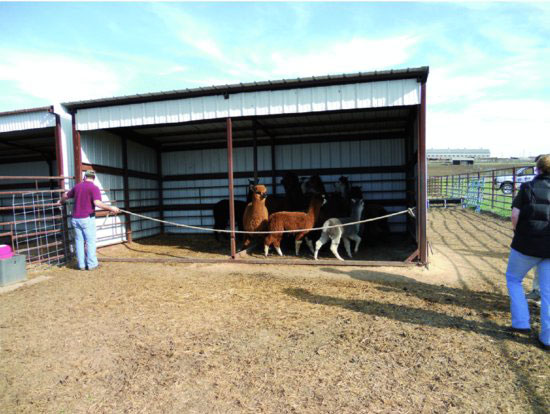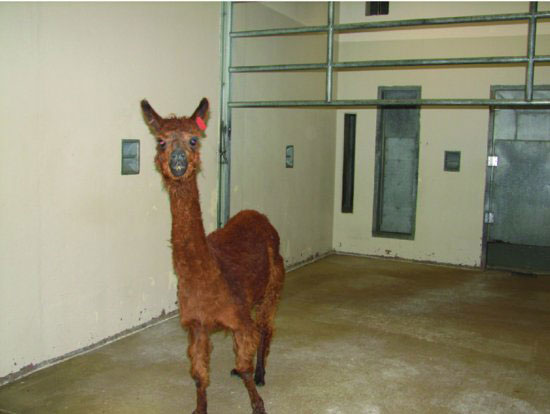Figure 1.2 The long rope used as a mobile barrier can be suspended between two people or may be attached to a stationary object and used to gradually reduce the area of containment.

Although many llamas and alpacas are trained to be handled and haltered, uncooperative individuals can easily be captured in a small catch pen (Figure 1.3). The camelid is positioned against a solid barrier or toward a corner of the enclosure and approached from the neutral point of the shoulder. Then the lead rope is swung over the back at the base of the neck (Figure 1.4). Then, the handler slowly walks around the front of the camelid to the neutral point of the opposite shoulder until the animal turns away. The free end of the lead rope is grasped and the rope held firmly to restrain the animal’s movement (Figure 1.5). The handler then moves toward the side of the neck closest to the shoulder and wraps the arms around the neck and firmly grasps the neck for restraint (Figure 1.6). A halter is placed on the head (Figure 1.7) and positioned so that the cross strap of the halter is maintained on the bony bridge of the nose (Figure 1.8). This is important because the rostral end of the nose is cartilaginous and easily collapses under pressure, which can obstruct breathing (Figure 1.9). Llamas and alpacas that are halter trained are most often accustomed to being held and lead from the left hand side of the animal (Figure 1.10).
Figure 1.3 Uncooperative patients, such as this alpaca, are most easily captured by initial containment in a stall or pen.

Stay updated, free articles. Join our Telegram channel

Full access? Get Clinical Tree


